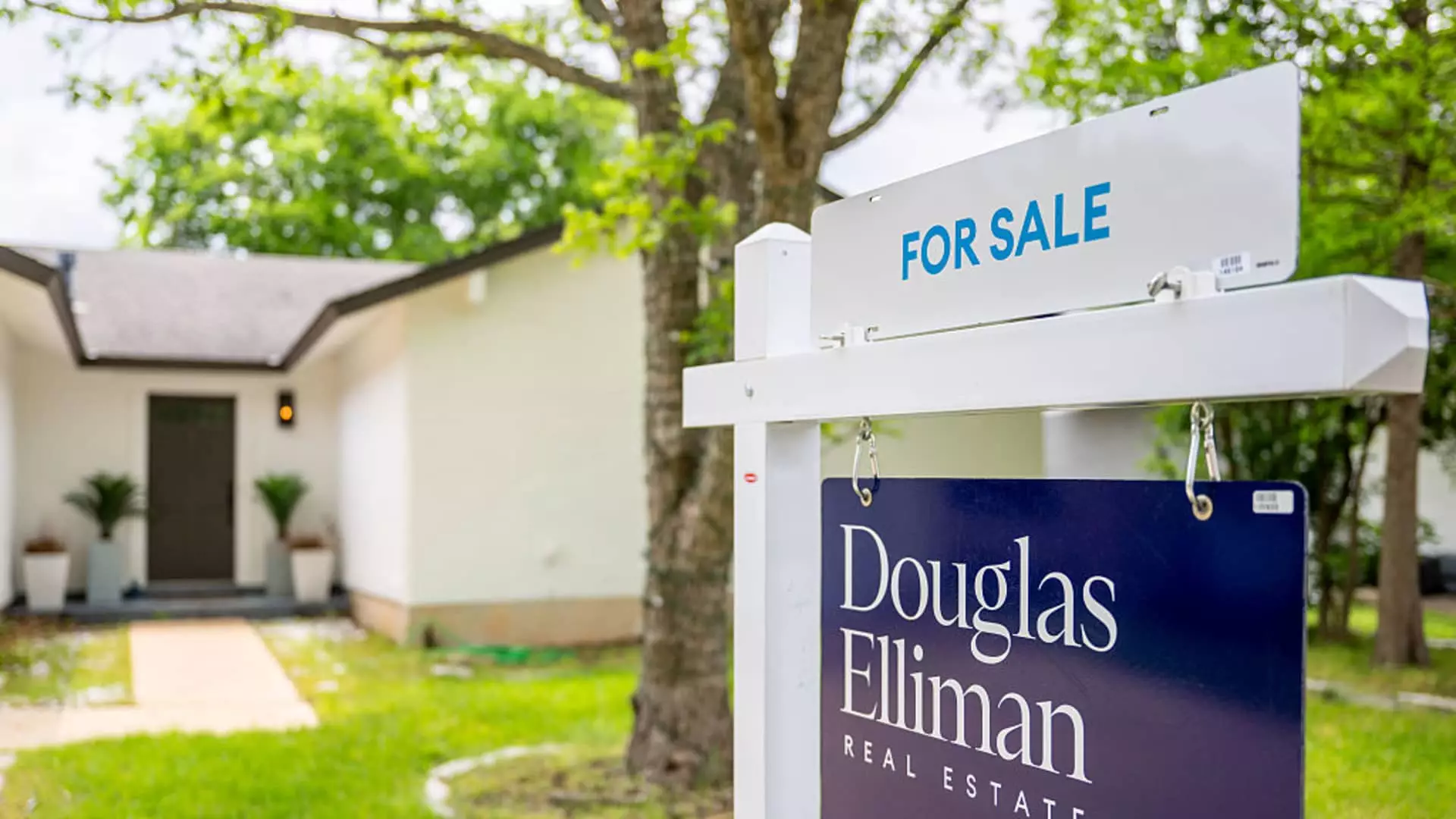In the world of real estate, a seemingly positive statistic—a 0.8% increase in previously owned home sales—has been tossed around like a glowing beacon of hope. Yet, upon closer inspection, it quickly becomes clear that this rise, bringing the seasonally adjusted annualized rate to a meager 4.03 million units, is less about recovery and more about survival in a tumultuous market. Analysts had predicted a decline of 1%, but what does a slight uptick really signify when sales are still 0.7% lower than this time last year? It suggests a market clinging to frail optimism as it contends with the heavy burdens of high mortgage rates and dwindling affordability.
The Northeast has shown resilience, with a 4.2% increase month-to-month, but even that performance is starkly contrasted by the West’s dismal 5.4% decline. Here, in the most expensive region of the country, the reality of homeownership remains a distant dream for many. The data reveals a landscape that is uneven at best, and a troubling picture at worst. Especially in the West, where the market’s glossier statistics reflect a painful truth—aspiration has run headlong into economic barriers.
The Mortgage Rate Conundrum
Lawrence Yun, the National Association of Realtors’ chief economist, rightly points to high mortgage rates as a primary culprit in stifling sales activity. Currently, these rates shoot above 7%, marking a harsh contrast to previous years when more favorable mortgage conditions allowed buyers to enter the market with less trepidation. It is a sobering reality that high rates like these often deter first-time buyers, a demographic crucial for a healthy housing market. With only 30% of transactions being initiated by eager newcomers, it’s evident that enthusiasm is waning.
The somber aging of home-buyers paired with rising loan costs will inevitably perpetuate a cycle of stagnation. While Yun expresses hope for a potential decrease in rates later this year—an event that could invigorate buyer visibility—it feels disingenuous. The suggestion that “strong income growth” and a “record-high number of jobs” will seamlessly translate into a booming housing market feels like wishful thinking for many individuals consumed by economic realities.
Rising Inventory Against Pressured Prices
For all the griping about high mortgage rates, there is a glimmer of good news in the rising inventory of houses for sale, which jumped over 20% from last year to reach 1.54 million units. Yet, even with this excess, we see a scant 4.6-month supply, which historically remains on the lower end of the spectrum. The median price for homes in May stood at a staggering $422,800—high enough to raise eyebrows and feelings of despair among potential buyers.
Typically, one would expect increased inventory to lower prices, but that’s not the case here. Instead, prices continue to creep upwards, even as demand softens. In May, a remarkable 28% of homes sold above their listing price. These figures, while seemingly positive, mask the underlying issues of affordability and market fragmentation. The data also reveals that homes are now taking longer to sell—27 days on average, compared to 24 days last year—further underlining the slowing pace of an often-brisk market.
A Market Divided and Disillusioned
Amid various price ranges, the market appears split. Sales have crested at the higher end, primarily because of the greater inventory in that domain. However, sales in the $1 million-plus category have declined compared to a year ago, symbolizing a deep-seated uncertainty among affluent buyers traditionally seen as staving off market downturns. The optimistically small increase of 1% in the $750,000 to $1 million range hardly signifies a robust market.
Beneath the pretense of recovery lies a deepening chasm of disillusionment. As first-time buyers encounter seemingly insurmountable hurdles and all-cash transactions rise to 27%, it becomes clear that a significant portion of the population remains locked out. The market may not only be mired in high interest but also in an illusion of normalcy—one that is rapidly fading as the realities of American economic disparity rear their heads. The hopeful rhetoric surrounding a possible rebound rings hollow when faced with the daily challenges many aspiring homeowners must navigate.


Leave a Reply